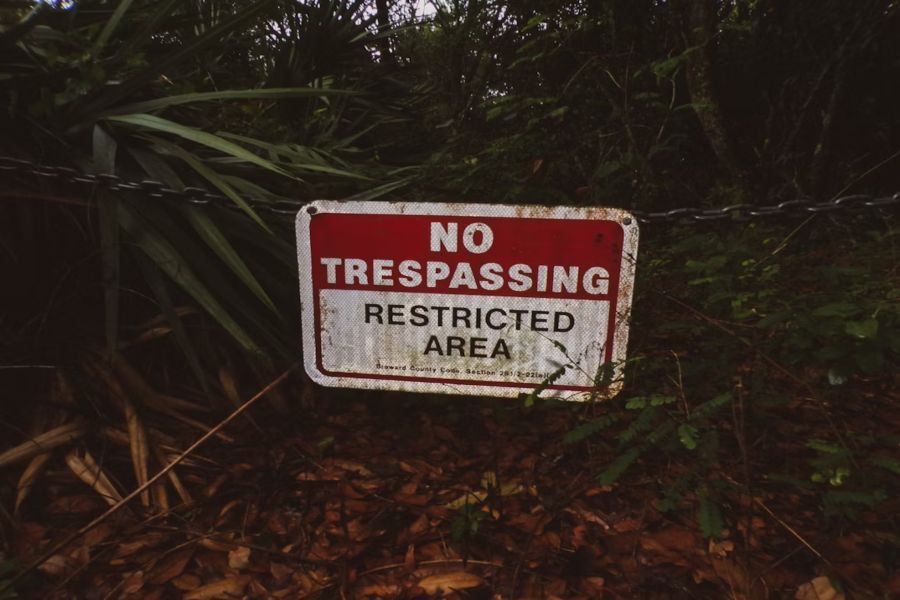Criminal trespassing is one of the most misunderstood yet commonly charged offenses across many jurisdictions. From crossing a neighbor’s yard without permission to entering a restricted business zone, this act can carry serious legal consequences. But what is criminal trespassing in its purest legal form? It typically refers to unlawfully entering or remaining on someone else’s property without consent and with knowledge or intent to break the law. This violation can range from a simple misdemeanor to a more severe felony based on the circumstances involved.
Understanding what criminal trespassing is is crucial for both property owners and everyday citizens. Whether you’re trying to protect your home or accidentally cross a boundary line, knowing the law helps prevent legal trouble. This article breaks down the law, the penalties, the circumstances that escalate charges, and your legal rights.
What is criminal trespassing?
Criminal trespassing is the illegal entry or remaining on someone else’s property without permission, often with the knowledge or intent to defy the owner’s rights. It can lead to fines, jail time, or a criminal record.
The Definition of Criminal Trespassing
What is criminal trespassing? At its core, it is an act of entering or staying on property that you do not have legal permission to access. The law takes into account intent, notice, and location. Whether it’s private land, commercial property, or a government facility, being present without consent could result in criminal charges.
In most states, criminal trespassing falls under misdemeanor offenses. However, it can escalate based on intent or if force, threats, or weapons are involved. Laws vary, but one factor remains the same: the person must knowingly violate the boundaries of the property.
There are different degrees of criminal trespassing. First-degree trespass generally involves entry into a dwelling or a building, while second-degree covers land or enclosed areas. Third-degree, in some states, may include unauthorized use of property with minimal restrictions.
What makes the term “criminal” significant in this context is the intent to disregard warnings, signage, or previous notice. For example, if you climb a fence marked with “No Trespassing,” you’re far more likely to face criminal charges than someone who simply walks onto an unmarked lawn.
Ultimately, criminal trespassing is about violating another person’s property rights in a willful or negligent way. To avoid it, it’s best to understand your rights and always seek permission before stepping onto private or restricted land.
Why Do People Commit Criminal Trespassing?
Criminal trespassing isn’t always a deliberate act—it can result from misunderstandings, desperate circumstances, or intentional defiance.
Accidental Trespassing vs. Intentional Entry
Many people commit criminal trespassing without realizing it. Wandering hikers, lost travelers, or even delivery personnel may cross into prohibited areas by accident. On the other hand, some individuals enter knowing full well they lack permission, often for protest or theft.
Civil Disobedience and Protest Movements
Activists might intentionally trespass during protests or demonstrations. While their actions are based on moral or social beliefs, the law still sees it as a criminal offense.
Squatting and Homelessness
Sometimes, criminal trespassing occurs due to necessity rather than malice. Homeless individuals or squatters may enter abandoned homes or properties, not to commit crimes but to find shelter. The courts often struggle to balance compassion with property laws in these cases.
Domestic Disputes and Relationship Conflicts
In domestic settings, ex-partners may enter a former shared home without consent, especially when no clear legal separation exists. These incidents are common in restraining order violations.
Mistaking Ownership or Boundaries
Some property lines are poorly marked or confusing. If someone builds or gardens on what they believe is their land—but isn’t—charges could still apply, even if the mistake was honest.
Elements That Define Criminal Trespassing
Criminal trespassing involves more than just stepping onto someone else’s property—it must meet specific legal standards to be considered a punishable offense. Courts and law enforcement look at several core elements when determining if a trespassing act qualifies as criminal. Here’s a breakdown of the key factors that establish such a charge:
- Unauthorized Entry
This is the most basic element. The individual must have entered or remained on the property without the owner’s consent. Even temporarily accessing private land without permission can fulfill this requirement. - Intent or Knowledge
The person must either know or should reasonably have known they were not permitted to enter the premises. In other words, the action must not be purely accidental or innocent. - Notice or Warning
Legal trespassing charges often depend on whether there was a clear indication that entry was not allowed. This could be a posted “No Trespassing” sign, a locked gate, or a verbal instruction. - Refusal to Leave
If someone is asked to leave and refuses, this further strengthens the case for criminal trespass. Ignoring a direct request to vacate the property shows willful defiance. - Location and Context
The law treats trespassing differently based on location. For example, trespassing in a residence carries more severe penalties than on open, unfenced land.
Understanding these components helps clarify when an act crosses the line into criminal territory.
How the Law Handles Criminal Trespassing Charges
The way criminal trespassing is handled legally depends on state laws, the nature of the offense, and whether it’s a repeat violation. First-time offenders usually face misdemeanor charges, which may result in fines, community service, or short-term jail time.
If force, damage, or threat accompanies the trespass, charges escalate. For example, trespassing with intent to commit another crime can become a felony. In other cases, carrying a weapon while on someone’s property automatically classifies the offense more severely.
Defendants often argue that they didn’t know they were trespassing. In such cases, the prosecution must prove intent or negligence. Some states require clear signage or fencing to validate charges. Others consider even unmarked property protected.
Defenses may also include emergency, duress, or lack of intent. For instance, entering someone’s property to escape a dangerous animal or save a life may void criminal liability.
Repeat offenders are more likely to face stiffer penalties, including longer jail sentences or probation. Some jurisdictions even attach restraining orders or property bans after conviction.
Common Penalties and Consequences for Criminal Trespassing
Criminal trespassing can carry significant consequences that extend well beyond the initial arrest. While some cases may seem minor, the penalties vary based on factors such as intent, location, and whether the individual has prior offenses.
Misdemeanor Penalties for Trespass
Most criminal trespassing offenses are charged as misdemeanors. These typically result in punishments such as probation, community service, fines ranging from $100 to $1,000, or even jail time of up to one year. Even a first-time offense can lead to a criminal record that stays with the offender for life.
Felony Trespassing Charges
More severe situations, like entering a residence unlawfully, carrying a weapon, or having prior convictions, may elevate the charge to a felony. Felony trespassing carries steeper consequences, including several years in prison, substantial fines, and long-term parole supervision.
Civil Liability and Lawsuits
In addition to criminal charges, trespassers may face civil lawsuits filed by property owners. These suits can involve compensation for physical property damage, emotional distress, or business losses.
Impact on Employment and Future Opportunities
Having a criminal trespassing conviction can negatively affect employment prospects, especially in fields requiring background checks. It may also influence housing applications, licensing boards, or custody proceedings, creating lasting personal and legal challenges for the convicted individual.
Conclusion
Criminal trespassing is not only vital for avoiding legal trouble but also for protecting your property rights. The laws surrounding criminal trespassing differ widely across states and can carry hefty fines or jail time for violations. Whether you are a property owner seeking to enforce boundaries or someone trying to stay on the right side of the law, knowledge is your best defense. The act may appear minor, but its consequences can ripple through your legal, professional, and personal life.
FAQ’s
Can I be arrested for walking onto someone’s lawn?
Yes, if the property is clearly marked with signage or you were verbally warned and still entered or refused to leave, you can be arrested.
What’s the difference between civil and criminal trespassing?
Civil trespassing is a private dispute where property owners sue for damages, while criminal trespassing is prosecuted by the state and may lead to arrest.
Is it still trespassing if I didn’t see a sign?
Possibly. Many states accept verbal warnings, fencing, or other visible boundaries as valid notice, even if no physical sign is posted.
Can I go to jail for trespassing?
Yes. Even as a misdemeanor, criminal trespassing can lead to jail time, especially in cases of repeat offenses or aggravating circumstances.
How do I defend against a trespassing charge?
Valid defenses include lack of clear notice, acting out of necessity (like an emergency), mistaken property boundaries, or no criminal intent.




